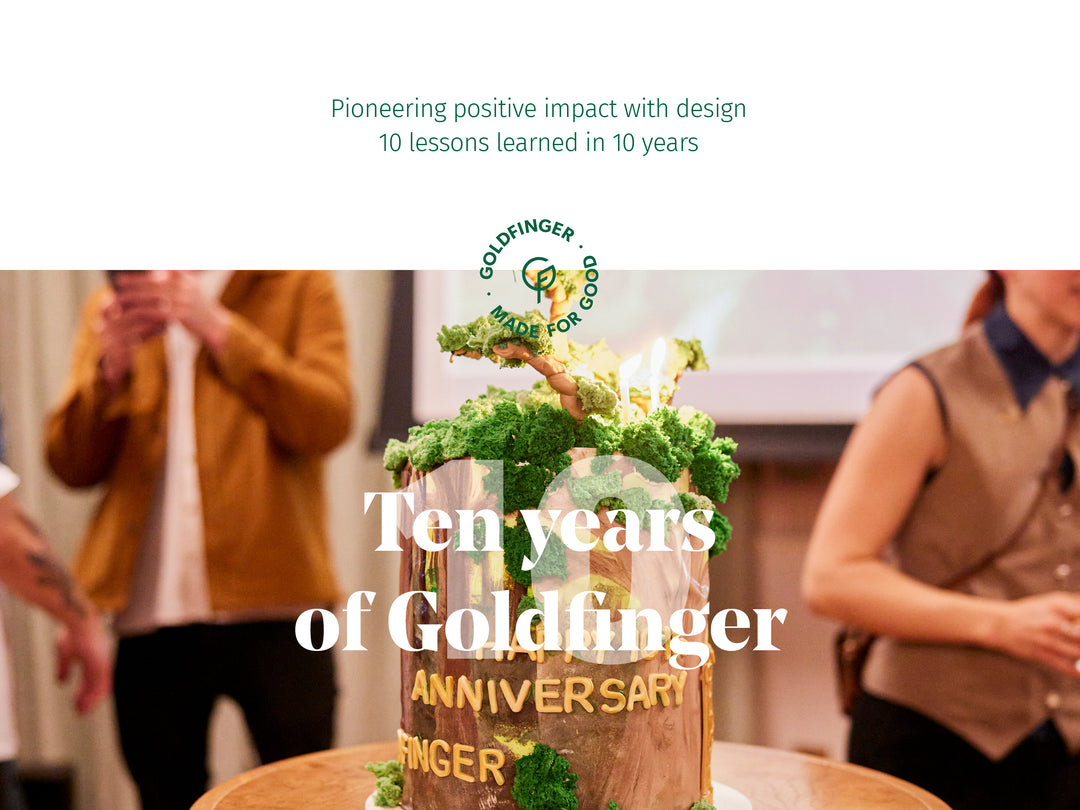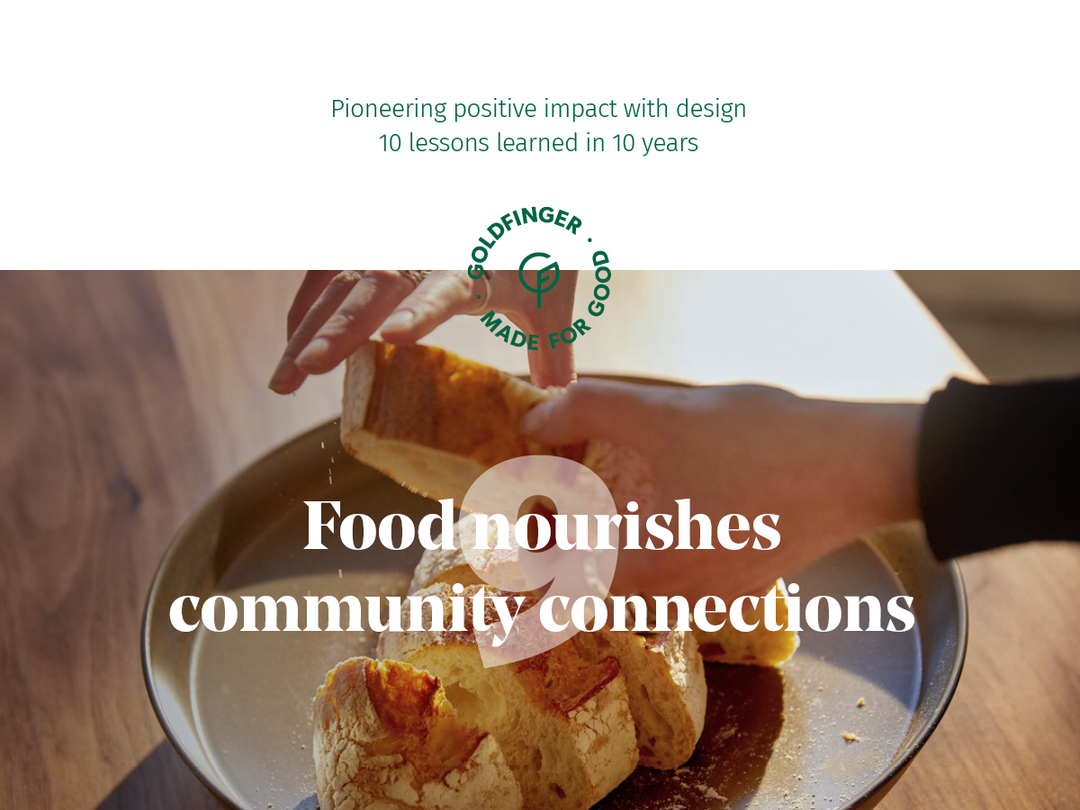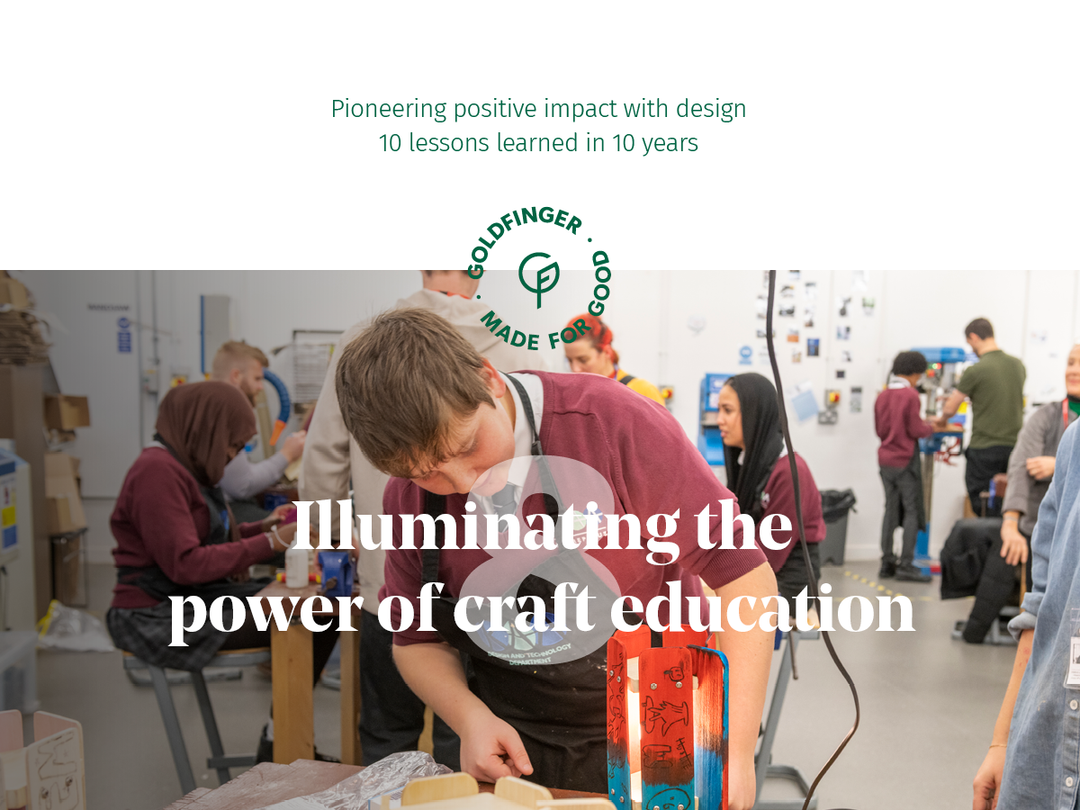Made for good: How to design with purpose

To commemorate our milestone ten year anniversary, we’re sharing ten lessons we've learned since our beginning. At Goldfinger, we believe that design must be a force for good, benefiting both planet and people. But what does that truly entail in practice? We sat down with three of our talented makers - Jason, Ian, and Annesofie - to discuss what they have learned about how sustainability impacts the furniture design process: the challenges it presents, the opportunities it unveils, and how the wider industry can create a fairer future for everyone.
Tradition meets modernity
Sustainable design, Ian explains, is "a revival of traditional craft, but with a modern twist." Working with solid timber necessitates a balance of traditional methods and modern technology to waste less material and produce innovative designs. .
Creating well-crafted, durable pieces that are built to stand the test of time is ultimately at the core of sustainable design. "It’s not necessarily that you’re taught to design sustainably,” says Annesofie, “it’s more that you’re taught to design for longevity."
Made for good
In order to ensure that each piece is truly made for good, our makers consider everything from the quality of the materials and the joinery options, to future repairability and potential transport constraints.
“If a piece of furniture is made well, it will also be passed down in a family through generations." - Annesofie

Sustainability: an opportunity, or a constraint?
Rather than hindering creativity, working sustainably generates exciting opportunities to innovate. As Ian notes, "Once you understand the rules, then you can break them." . Sustainable design requires continual re-evaluation of the design process - building up your knowledge of everything from the best glues to the most effective joinery techniques, and perhaps even adapting the design to fit the available material’s unique attributes.
“It’s exciting to just get better, and maybe pioneer in the industry a new sustainable approach and sustainable manufacturing methods.” - Jason
Circular design
Our commitment to sustainability extends to the circular economy. By partnering with timber suppliers like Fallen & Felled, we give new life to trees that would otherwise be needlessly wasted. We use off-cuts in our designs when we can, and we also repurpose our waste by giving it to boaters on the canal to heat their homes in winter, and donate our wood chips for pony bedding.
Annesofie feels that a lot of new, innovative materials also show promise in promoting circular design, highlighting the round tabletops from our recent project at Tate Modern, crafted by Spared entirely from repurposed waste.


Annesofie handcrafts bespoke furniture for the Tate Modern's newly-opened cafe and bar, Corner.
Design and wellbeing
Design can have a profound effect on our individual and collective wellbeing as well. Our makers see that positive impact first-hand by working alongside young people in our Goldfinger Academy. Annesofie believes that “we’re all inherently creative beings” and that by crafting we can all learn to “appreciate everything that you surround yourself with more”. On a broader scale, Annesofie says that the work of our Academy is connected Neuroarts, a growing field of research into how the arts affect our overall health.

Building better futures
To spearhead change, we must first demand that sustainability becomes standard practice in design education. Jason recommends that more universities re-focus their courses through a sustainable design lens, so that "kids will learn that as the norm - how to design to each material, and that each product has to have a lifecycle analysis."
For the design industry at large to embrace sustainability, it needs to move away from globalised mass production. It all starts with a mindset shift. As Ian says, “we just need to look at the resources we already have in creative ways - how can we reapply or reuse them” Annesofie advocates for locally-sourced products made with local materials and delivered through more transparent supply chains.
“As a community of designers, we need to ask more of our suppliers, to try to create and encourage better supply chains.” - Ian
Designers of all kinds have a unique opportunity to push for innovative sustainable products and demand more mindful manufacturing methods that have the potential to drive industry-wide change.

-
Author: Goldfinger
Contributors: Jason Posnot, Ian Burnell, Annesofie Holm Andersson.


